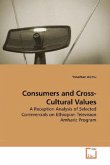Print media may not be able to pull off the
all-dancing, all-singing
audio and visual appeal of more recent media, but it
continues to
have broad appeal. Of course, print has the advantage
of being
remarkably portable, it does not need to be plugged
in or have
batteries added to work and, as a bonus, it can be
safely recycled
after use. Volunteer (or non-profit) organisations in
particular
favour the use of print less for information sharing
than for
building community. For more than 100 years the
Seventh-day
Adventist Church has maintained a large and diverse
print output.
One of their weekly magazines provides a case study
to discover
what can be effective through print in contributing
to group
connectedness and cohesion, and developing a sense of
belonging.
The findings point to ways in which print can be
successful in
achieving these goals.Those involved in media will be
interested to
discover, and may be surprised at, how print
continues to have a
strong impact despite the fascination newer media brings.
all-dancing, all-singing
audio and visual appeal of more recent media, but it
continues to
have broad appeal. Of course, print has the advantage
of being
remarkably portable, it does not need to be plugged
in or have
batteries added to work and, as a bonus, it can be
safely recycled
after use. Volunteer (or non-profit) organisations in
particular
favour the use of print less for information sharing
than for
building community. For more than 100 years the
Seventh-day
Adventist Church has maintained a large and diverse
print output.
One of their weekly magazines provides a case study
to discover
what can be effective through print in contributing
to group
connectedness and cohesion, and developing a sense of
belonging.
The findings point to ways in which print can be
successful in
achieving these goals.Those involved in media will be
interested to
discover, and may be surprised at, how print
continues to have a
strong impact despite the fascination newer media brings.








